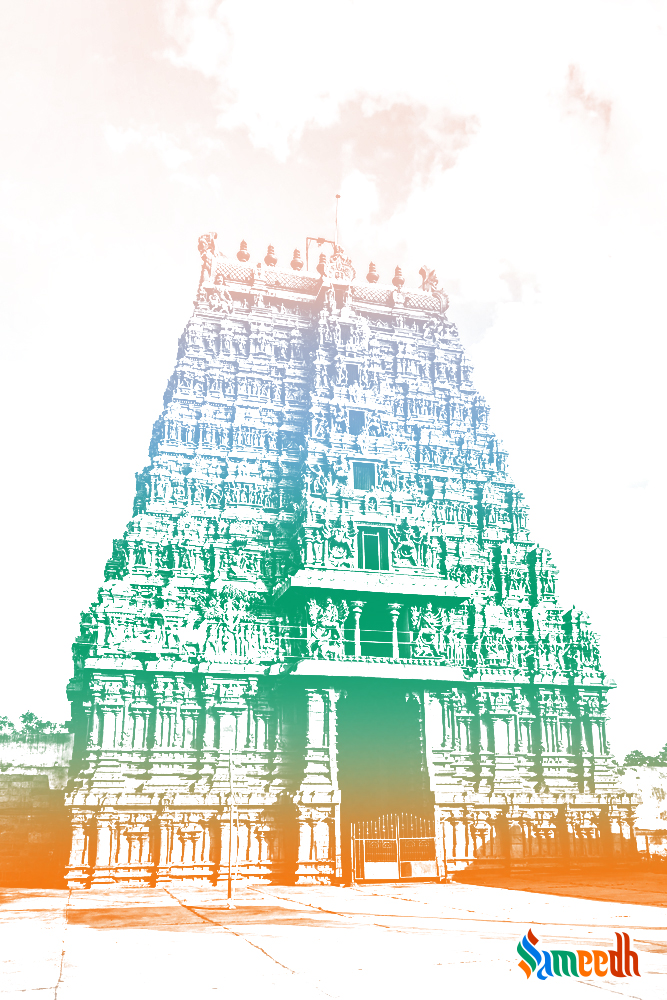We know Madurai as the place with the Meenakshi Temple, but there is a lot more to be known about Madurai.

LOCATION
Madurai is at 9.93°N 78.12°E, located on the flat and fertile plain of the Vaigai river, which runs through the city, dividing it into two almost equal halves. The Sirumalai and Nagamalai hills lie to the north and west of Madurai with the western ghats being in the northwest.
MYTHOLOGY
According to a legend found in the Tamil text ‘Tiruvilaiyatal puranam’, king Malayadwaja Pandya and his wife Kanchanamalai performed a Yajna seeking a son for succession. Instead, a daughter was born out of the fire who was already 3 years old and had three breasts. Shiva intervened and said that the parents should treat her like a son, and when she meets her husband, she will lose the third breast. They followed the advice. The girl grew up, the king crowned her as the successor and when she met Shiva, his words came true, she took her true form of Meenakshi. According to the ‘Tiruvilaiyatal Puranam’, of the pilgrimage places in Shaivism, four are most important: Kashi, Chidambaram, Tirukkalatti and Madurai. The sacredness of Madurai is from this temple. The shrine of Sundareswarar is considered one of the ‘Pancha Sabha’ (five courts), where the Tamil Hindu tradition believes Shiva performed cosmic dance.
SIGNIFICANCE
Madurai has been inhabited since at least the 3rd century BCE. Madurai is mentioned in Kautilya’s (370–283 BCE) Arthashastra. Sangam literature like ‘Maturaikkāñci’ records the importance of Madurai as a capital city of the Pandyan dynasty. It is mentioned in the works of Roman historians Pliny the Younger (61 – c. 112 CE), Ptolemy (c. 90 – c. CE 168), those of the Greek geographer Strabo (64/63 BCE – c. 24 CE).
The great book ‘Mahavamsa’, mentions that in the 6th century BCE, Prince Vijay (BCE 543–505) married the daughter of King Pandu of Madurai and 700 men of prince Vijaya married 700 maidens from Madurai as their wives. The princess and maidens were sent to Sri Lanka with valuable items by ships and they landed in a place referred presently as Mannar. According to a 2nd-century BCE Tamil-Brahmi inscription refers to the city as ‘Matiray’, an Old Tamil word meaning a ‘walled city’.
TOWN ARCHITECTURE
The temple complex is the centre of the old city of Madurai. It consists of monuments inside a number of concentric enclosures, each layer fortified with high masonry walls. The outer walls have four towering gateways, allowing devotees and pilgrims to enter the complex from all four directions. After the city’s destruction in the 14th century, the Tamil tradition states that the king Vishwanath Nayaka rebuilt the temple and the Madurai city around it in accordance with the principles laid down in the Shilpa Shastras. The city plan is based on concentric squares with streets radiating out from the temple. Early Tamil texts mention that the temple was the centre of the city and the streets happened to be radiating out like a lotus and its petals.
THE PLACE DURING DIFFERENT PERIODS OF TIME
By the 13th Century when the Indian subcontinent was conquered by the Delhi Sultanate, they began raiding central India by the late 13th century. Sultan Ala ud Din Khalji’s infamous Muslim general, Malik Kafur went deeper into the Deccan peninsula. He raided Madurai too. After the conquest and destruction, Muhammad bin Tughluq appointed a Muslim governor in Madurai named Jalaluddin Ahsan Khan. The Muslim Madurai Sultanate was relatively short-lived, with the Hindu Vijayanagara Empire under Bukka Raya removing it in 1378 CE.
ART & CRAFT
The temple is a pristine example of art and craft during the times of the Pandya Kings.
DEMOGRAPHY
According to 2011 census Madurai had a population of 10 lakhs with a sex-ratio of 999 females for every 1,000 males, much above the national average of 929. The average literacy of the city was 81.95%, compared to the national average of 72.99%. According to the religious census of 2011, Madurai had 85.83% Hindus, 8.54% Muslims, 5.18% Christians and 0.47% others. Tamil is the main language, and the standard dialect is the Madurai Tamil dialect, and is spoken by 89.0% of the population.
To know more about Hinduism, its places of religious importance, pilgrimage routes, its famous temples, etc. or for any special need like conducting a pooja at your home please visit our website Sameedh.
